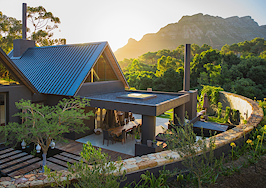New markets require new approaches and tactics. Experts and industry leaders take the stage at Inman Connect New York in January to help navigate the market shift — and prepare for the next one. Meet the moment and join us. Register here.
Adaptive reuse conversions have surged since the onset of the pandemic, fueled primarily by office-to-residential conversions, according to a new report by the rental listings portal RentCafe.
New adaptive reuse apartments — apartments converted into residential units from another use — are growing at a faster rate than new construction apartments, jumping 25 percent over the past two years, compared to a 1o percent increase in new construction apartments, according to the report.
A whopping 28,000 new adaptive reuse rentals were brought onto the market between 2020 and 2021 alone, compared to 2018 and 2019, when just 22,300 apartments were brought on line.
The surge has been driven by office-to-residential conversions, which took off in 2020 when office buildings sat empty. Approximately 11,000 apartments have been carved out of former office buildings in just the past two years, according to the report, and the sector saw a 43 percent jump just between 2020 and 2021.
Washington, D.C. led the surge with the highest number of converted buildings during the pandemic with 1,565 converted units between 2020 and 2021. Washington was followed by Philadelphia and Chicago, with 1,552 and 1,139 converted units respectively.
Older buildings in urban downtown areas are the prime target for conversion projects, the report added.
“Existing building architecture is the critical starting point,” Doug Ressler, manager of business intelligence at Yardi Matrix, said in a statement. “Not all buildings are equally threatened by the work-from-home revolution. Larger office buildings in abandoned central business districts are better suited to conversion than the often-smaller office complexes distributed around the suburbs.”
While office conversions proved to be the most popular category, conversions of former medical facilities saw a 212 percent increase between the pre-pandemic period and 2021, the report found. Former religious buildings proved popular as well, surging 72.7 percent during the pandemic, while conversions of former hotels grew by 65.6 percent.
The growth of adaptive reuse conversions is expected to grow over the coming years, with 77,000 adapted apartments expected to come on line in the coming years, according to the report. Los Angeles appears to be the city boasting the most in-the-works conversion projects, with an estimated 4,130 converted apartments in the works.
The growth of adaptive reuse projects comes as many prospective homebuyers turn to long-term renting as an alternative to sky high homeownership costs amid mortgage rates above 7 percent.
Rent prices have also skyrocketed over the past two years, but have recently showed signs of slowing, with national rent prices decreasing between September and October.













